美军不搞多个穴位,就搞那几个就搞定军队长遇到的疼痛,情绪波动,脑震荡,西医难很快搞定的病症。
THE SCENE: Iraq, Afghanistan, or anywhere where U.S. troops are risking life and limb.
THE TIME: The not-too-distant-future. Maybe even 2009.
Joe is on patrol.
It’s the middle of summer in the desert town. The air hangs heavy, hot, dry and dusty, like a blast furnace firing steel. The heat penetrates Joe’s 80 lb pack in much the same way the heat from boiling water penetrates the shell of an unfortunate lobster. Joe’s heart races. His squad is on edge; their eyes dart furiously to and fro, looking for the deadly threat that might lurk in the shadows. Every shadow is a potential source of death, every alley a refuge from which the enemy can attack and kill him or his buddies, every rooftop a fortress from which the enemy can rain death upon the squad. The area is known to be thick with terrorists and insurgents. Joe pictured them waiting unseen from every nook and cranny for the opportunity to attack. The skin on Joe’s back is all prickly. He distinctly feels as though he has a huge bullseye pointed on his back. He feels a bead of sweat dripping down his forehead and onto his eyelid, all slimy and salty. Joe desperately wants to wipe it away, but that would necessitate removing one of his hands from his weapon. The split second it would take for him to put it back might mean the difference between life and death for him or one of his buddies.
A loud roar fills Joe’s ears, and suddenly he feels as though he has no weight. The scene unfolds in slow motion, just like in the movies. Dazed, Joe hears a tumult as though from a great distance, but can see nothing. Yelling and gunfire all around, he becomes conscious enough to realize that he’s lying flat on his back. He feels searing pain in his legs and a hot liquid oozing around them. It occurs to Joe that it must be his own blood or even perhaps his own urine, but he’s just too dazed to care.
“Medic!” Joe hears someone scream. He feels someone pull his helmet from his head and realizes that the sound of gunfire and yelling is receding. His unit must be driving away the ambushers. Good! He thinks. Give those assholes hell, guys! He opens his eyes, and realizes that his buddy’s got his back, and turns to see another man, a medic, drop to his knees at his side. His uniform is stained a disturbing red. Joe feels the medic wrapping something around his thigh. It’s a tourniquet, and Joe cries out in pain as he feels it constricting around his upper thigh.
“Bleeding’s better!” Joe hears the medic say to his buddy. “I’ll take it from here.” Joe’s buddy runs off to join the rest of his unit, and the medic moves his face close to Joe’s. He feels himself being moved from side to side and then his legs being moved. More pain. Joe cries out.
The medic leans in to talk to Joe, “I think we’ve got the bleeding under control for now. I put a tourniquet on your leg. Let’s get you out of here. The docs’ll patch you up in no time.” Joe is vaguely aware of another corpsmen with a stretcher nearby. The medic leans in again, “Are you in pain, soldier?”
“What do you think? My leg hurts like a sonofabitch! I could really use something for the pain,” Joe hears himself yelling, again as if from a distance. Pain is shooting through his leg, setting every nerve on fire, and the tourniquet is biting into raw muscle through the edge of a wound that comes all the way up to his groin. The flayed edges of his skin shoot fire to his brain, and he can feel his broken bones grinding against each other every time he moves in spite of the splint.
“I’ve got something better that’ll help,” the medic screams over the din.
Better? Joe thinks. I’m in agony here. I need something! Anything!
The medic pulls a small box out of his pack. Joe sees that it’s a small case. He opens it. Its contents look something like this:
acupuncturekit
Joe is puzzled. Where’s the morphine? He wonders. “What are those needles?” Joe asks. “What are you doing? I’ve never seen syringes that look like that before!”
“Acupuncture,” replies the medic. “I’ll take care of you.”
“What are you going to do with them?” Joe replies.
“Stick them into your earlobe. It’ll take the pain away really fast.”
“Are you shittin’ me?” Joe screeches, trying to get up to grab the medic by the front of his uniform. “My leg’s a bloody mess, I’m in agony, and you’re tellin’ me you’re gonna stick little needles in my ear and make it all better? Like that‘s going to do anything! I need real pain medicine! Give me morphine! NOW!”
******
If there’s any class of citizen who deserves nothing but the best care science-based medicine has to offer, it’s our men and women in the military, especially during wartime, when they are putting themselves in the line of fire, risking death or horrific injury to fight in the name of our nation. We citizens through our representatives send them off to foreign lands to fight; we are obligated to do our best to care for those who come back missing a limb or having suffered a serious injury. During this war, we have achieved much towards this end, too. I know colleagues who served in the military, and this war, like many wars, has seen amazing advances in the care of wounded soldiers. Wartime has always been a time of incredible experimentation and innovation, as doctors look for newer, better, more efficacious, and more efficient ways to care for our wounded soldiers. Necessity drives innovation, and the history of military medical innovations go back at least to the Civil War. Two examples come to mind. For example, World War II saw the widespread of plasma and blood transfusions on the battlefield, as well as the use of morphine and penicillin, and the end of World War II and the Korean War saw the deployment of MASH units. Truly, some advances during this war have been spectacular Particularly impressive is how the wounded can now be evacuated from the battlefield to nearby hospital bases, stabilized (and operated on emergently if necessary to stablize them), and then evacuated either to regional military hospitals in nearby countries or even to hospitals like Landstuhl Regional Medical Center in Germany, which receives a significant percentage of soldiers wounded in Iraq or Afghanistan. If there’s one thing that we’ve learned during the last six years of war, it’s that getting casualties to definitive treatment faster does indeed save lives that would otherwise be lost. Using this strategy of rapid evacuation to facilities where definitive treatment could be undertaken, by the end of 2004 the military medical system had achieved an unprecedented 90% survival rate for soldiers wounded in combat.
This culture of experimentation to save lives can occasionally lead to perhaps a bit more openness than is scientifically justified to measures before they are validated than would be the case under less severe circumstances. Sometimes this takes the form of deploying treatments and devices that are later found to be ineffective or even harmful. Usually, these sorts of failures come about because they’re being tested in under extreme battlefield condidtions, There often isn’t adequate time to do the sorts of rigorous studies to prove or disprove the efficacy of a new trauma treatment modality because the chaos of battlefield conditions precludes it and the culture of military medicine is to save soldiers’ lives, whatever it takes. However, military innovation, forged in the heat of battle, can be a messy process. Worse, sometimes our military hospital system and the Veterans’ Administration don’t always live up to their charge to provide the best care for our wounded veterans.
Whatever failures the military and veterans’ medical system may have, however, it does not help us as a nation achieve the end of caring for injured soldiers and vets if we subject them to unscientific modalities. Yet that’s exactly what the Air Force is poised to do. Yes, I did exaggerate just a bit what the military is planning with my little story above in order to make a point, but unfortunately, I’m sorry to say that I’m probably exaggerating considerably less than I wish I were. Earlier this year, I said hello to Battlefield Acupuncture:
LANDSTUHL REGIONAL MEDICAL CENTER, Germany – A medical procedure dating back thousands of years was introduced to patients and medical staff for one week in March at Landstuhl Regional Medical Center.
A limited form of acupuncture, called battlefield acupuncture, was introduced to LRMC doctors who applied the procedure to war-wounded servicemembers and local patients for pain relief, and often with significant results.
Major (Dr.) Conner Nguyen was exposed to acupuncture as both a patient and physician and was equally impressed in both roles. As a patient, Major Nguyen experienced 25 percent increased range of motion and a 50 percent reduction in pain for chronic shoulders and upper back pain he endured for several years.
True, Major Nguyen is not giving acupuncture on the battlefield, but when I first read this article several months ago, I wondered: Can using acupuncture on the battlefield be far behind? Battlefield acupuncture is the creation of another officer Col. (Dr.) Richard Niemtzow, who is a radiation oncologist by training but also one of 40 Department of Defense doctors trained as certified acupuncturists. An article from WTOP News two years ago describes how Col. Niemtzow discovered acupuncture:
Col. Richard Niemtzow, a radiation oncologist, received a brochure on acupuncture in 1994. At first he threw it out, but then he decided to learn more about the ancient practice and attended a conference on acupuncture. He was sold. Niemztow started the first acupuncture clinic at McGuire Air Force Base in Ohio and now practices acupuncture at Andrews Air Force Base, the Pentagon and Walter Reed Army Medical Center.
Three or four doctors at Walter Reed practice acupuncture on their patients. Niemtzow visits each week, to help relieve the pain for amputees back from Iraq. He says he helps 50 percent of amputees suffering from phantom pain.
I had the opportunity to sit in on patient visits who were referred to acupuncture at Walter Reed and received the treatment for the first time. I witnessed men and women finding relief in a matter of minutes after suffering chronic pain for years.
Niemtzow used various techniques on the patients he developed and are now taught throughout the country. In one technique, he places acupuncture needles into the ear, since the ear is integrated to the central nervous system.
Niemtzow says you interfere with the processing of pain and in a way, turn off the pathway and that’s why pain may go away. Each of the patients he saw were referred back to the clinic for follow-up treatments. He says it is possible their pain will come back.
“Possible”? How about “virtually inevitable”?
Let’s look at the “progress” of the use of acupuncture in the military. Its infiltration into the normally hard-nosed military is directly attributable primarily to one man, Col. Niemtzow. Two years ago the use of acupuncture in the military was uncommon, with Col. Niemtzow lamenting how few acupuncturists there were. In the article in Military.com from earlier this year, it’s clear that the program has expanded considerably. Another thing that I note is that there is no mention of science or well-designed clinical trials to test whether “battlefield acupuncture” does anything at all. I did a little PubMed search for “battlefield acupuncture” and found nothing. Searching for Col. Niemtzow on PubMed, all I found was a slew of articles in that repository of bad studies of woo, the Journal of Alternative and Complementary Medicine. There was one article in Military Medicine and one in JACM, the latter of which is a photo essay. The article in Military Medicine is indeed a pilot study, but even on those terms it’s not impressive. It was completely unblinded, and no sham acupuncture was used for the controls. Even more odd, the auricular acupuncture needles, which are considerably smaller than standard needles, were left in place in the ear for up to several days until they fell out. Even given the shortcomings of the study that could lead to bias, the results were still not particularly impressive. Although the acupuncture group was reported to decrease by 23% initially and the conventional therapy group not at all, within 24 hours there was no difference. Even by the usually low standards of poorly done “CAM” studies, these results here were not striking.
I wondered at the time: That’s it? This is what Col Niemtzow is basing his assessments of the “success” of acupuncture in phantom limb pain syndromes and various other chronic pain conditions resulting from combat injuries? It’s thin gruel indeed. But apparently it’s enough for the Air Force.
Let’s fast forward to last Thursday. Harriet will probably clutch her chest in pain when she reads what’s coming next. At the very least, she’ll have one hell of a headache. (Maybe she should get some acupuncture for that.) It would appear that Col. Niemtzow is about to get his wish. The Air Force announced a program to train physicians in battlefield acupuncture before their deployment to Iraq:
ANDREWS AIR FORCE BASE – Using ancient Chinese medical techniques, a small team of military doctors here has begun treating wounded troops suffering from severe or chronic pain with acupuncture.
The technique is proving so successful that the Air Force will begin teaching “battlefield acupuncture” early next year to physicians deploying to Iraq and Afghanistan, senior officials will announce tomorrow.
The initiative marks the first high-level endorsement of acupuncture by the traditionally conservative military medical community, officials said.
Using tiny needles that barely penetrate the skin of a patient’s ear, Air Force doctors here say they can interrupt pain signals going to the brain.
Their experience over several years indicates the technique developed by Col. Richard Niemtzow, an Air Force physician, can relieve even unbearable pain for days at a time.
That enables badly wounded patients who arrive here by medevac aircraft to begin to emerge from the daze of pain-killer drugs administered by surgeons in the field.
“This is one of the fastest pain attenuators in existence – the pain can be gone in five minutes,” said Niemtzow, a physician, acupuncturist and senior adviser to the Air Force surgeon general.
That’s right. Your tax dollars are being spent to turn physicians into acupuncturists and then deploy them to Iraq to treat wounded soldiers.
As for “successful”? How would Col. Niemtzow know that his program is a success thus far? I redid my searches of PubMed to see if perhaps had had published anything new since earlier this year that has led him to this conclusion. He hasn’t. Indeed, his most recent publication in a peer-reviewed journal remains his pilot study in Military Medicine. Next, I did a brand new PubMed search for “battlefield acupuncture.” Nothing. Nada. Zip. A search for “acupuncture AND Air Force.” Ditto. No, there’s nothing new in the peer-reviewed medical literature that I can find that would be compelling enough to justify investing in training physicians and medics in acupuncture techniques before they are deployed to Iraq. So why do Col. Niemtzow and his acolytes believe so intensely that their program is a success?
I think the key is the phrase “their experience over several years.” In other words, Col. Niemtzow is relying on anecdotal experience and nothing else. At least, it certainly appears that way. I’m open to being shown something scientifically rigorous about this program, but, quite honestly, I have yet to see anything, and I’ve looked. Col. Niemtzow’s CV lists two publications “in preparation” entitled Rapid Electroacupuncture Technique for the Treatment of Peripheral Neuropathies Induced by Cancer Chemotherapy and Xerostomia Secondary to Radiation and its Treatment Employing Acupuncture: Mechanisms of Actions, but that’s about it. There’s nothing more there about the use of battlefield acupuncture. My finding of Col. Niemtzow’s CV next led me to Col. Niemtzow’s website, and it’s clear that he is a true believer. For example, Col. Niemtzow asserts, without any convincing evidence, that acupuncture can be used to treat macular degeneration, xerostomia (I note the ASTRO study listed on this page used “electroacupuncture,” which is not acupuncture), and obesity. I don’t see listed even a single high quality study that supports any of his assertions. I wish I did, but I don’t. Worse, Col. Niemtzow spouts the same “ancient knowledge” fallacy about acupuncture that Harriet demolished a few weeks ago:
“We use acupuncture as an adjunct” to traditional therapy, said Niemtzow. “The Chinese have used it for 5,000 years. It works, and it’s powerful.”
The procedure developed by Niemtzow is a variation of traditional Chinese acupuncture in which long, hair-thin needles are inserted into the body at any of hundreds of points to ease pain.
Niemtzow’s variation uses one or more needles inserted into any of five points on the ear. The needles, which penetrate about a millimeter (or 4/100ths of an inch) into the skin, fall out after several days. The procedure can be repeated.
The ear acts as a “monitor” of signals passing from body sensors to the brain, he said. Those signals can be intercepted and manipulated to stop pain or for other purposes.
Even 18th-century pirates were convinced of the value, piercing their lobes with earrings “to improve their night vision,” Niemtzow said with a grin.
That last comment caused me serious pain. I hope Niemtzow was joking when he made the crack about the pirates. Also note the extreme scientific implausibility. This “ear acupuncture” is based on a physiological principle that makes every bit as much sense as reflexology, and I mean that in the worst way possible. In any case, our seriously wounded veterans are what the Common Rule would refer to as a “vulnerable” population. They’ve suffered grievous injury and are in a system in which they are accustomed to “following orders.” If a military physician tells them to try acupuncture, they’re not likely to argue. If a military physician approaches them with a clear attitude that he or she believes acupuncture works, they’re not likely to express skepticism. Indeed, if a military physician approaches a soldier to recommend “alternative” therapies, I have to wonder if the hierarchical structure of the military and the soldier’s duty to follow orders might actually enhance the placebo effect.
I said initially that my story above was an intentional exaggeration, but now I’m not so sure. There is clearly a movement to take battlefield acupuncture to the next level: the actual battlefield. Indeed, Army Rangers are considering using it:
Battlefield acupuncture caught the eye of U.S. Army Rangers, who often operate in remote locations. At their invitation, Niemtzow and his team trained some Rangers last summer.
Meanwhile, military acupuncturists pat themselves on the back for their enlightenment in the face of skepticism:
Nonetheless, advocates of the practice recognize that they must overcome skepticism within the ranks of military doctors.
“Oh, sure, some haven’t gotten the word,” said Burns, the clinic chief. “We are very much ahead of the curve.”
Hello, Galileo gambit.
I realize that Col. Niemtzow is acting out of a genuine desire to help our wounded veterans, especially those currently enduring difficult or intractable chronic pain due to wounds suffered in combat. I don’t doubt that he is a caring physician and only wants the best for his patients. Unforutnately, Col. Niemtzow has fallen prey to the disease that affects this blog’s “favorite” antivaccine pediatrician, Dr. Jay Gordon; namely, the inability or unwillingness to understand or accept just how easy it is for a clinician to be fooled when he relies on “case reports” or “personal clinical experience” to evaluate the efficacy of therapies. Indeed, it’s not arrogance on the part of advocates of science-based medicine that lead us to emphasize the importance of good science and well-conducted clinical trials; rather, it’s the humility of knowing that we, as humans, are just as prone to being fooled as anyone else. If anyone is arrogant, it’s physicians like Dr. Gordon and Col. Niemtzow, who believe that their clinical acumen inoculates them from making the mistakes of confusing correlation with causation, of not recognizing regression to the mean, or not believing just how potent the placebo effect can be in chronic pain syndromes. Traveling down the road to hell with only the best of intentions towards their patients, they fall right down the rabbit hole of pseudoscience.
Our wounded soldiers, indeed all our soldiers, deserve only the finest in science- and evidence-based medicine that can be delivered to them, be it on the battlefield, the mobile hospital, or military hospitals overseas or in the U.S. Unfortunately, as I and my cobloggers have documented for academia, there appears to be a major push by its advocates to introduce so-called “complementary and alternative medicine” (CAM) into military medicine. For example, earlier this year, initiatives were reported to use yoga, “Samurai meditation,” and even reiki and other “energy treatments” to treat PTSD. In October, it was reported that the military is testing out more and more “alternative” therapies:
WASHINGTON — The Pentagon is seeking new ways to treat troops suffering from combat stress or brain damage by researching such alternative methods as acupuncture, meditation, yoga and the use of animals as therapy, military officials said.
“This new theme is a big departure for our cautious culture,” Dr. S. Ward Casscells, the Pentagon’s assistant secretary for health affairs, told USA TODAY.
Casscells said he pushed hard for the new research, because “we are struggling with” post-traumatic stress disorder (PTSD) “as we are with suicide and we are increasingly willing to take a hard look at even soft therapies.”
So far this year, the Pentagon is spending $5 million to study the therapies. In the previous two years, the Pentagon had not spent any money on similar research, records show.
Not surprisingly, some “old friends” mentioned on SBM are involved in promoting the infiltration of CAM into the military. Niemtzow’s work is funded by the Samueli Institute for Information Biology. Meanwhile, the Samueli Institute has reportedly been receiving earmarks attached to military appropriations bills, one of which was for $2 million for the purpose of developing “a national program for evaluation and research on complementary, alternative and holistic medical practices (also called integrative medicine) for military personnel and veterans.”
The virus is spreading. Acupuncture, yoga, and other “soft” CAM modalities are just the foot in the door. They allow woo to creep in, as they have done in academic medicine. How long will it be before we see homeopathy being used in military and VA hospitals? How long will it be before my little story above is no longer a fanciful exaggeration written to make a point? I don’t know, but I fear the worst. I truly hope I’m just being alarmist, because our soldiers deserve much better. They deserve science-based medicine and surgery.
THE TIME: The not-too-distant-future. Maybe even 2009.
Joe is on patrol.
It’s the middle of summer in the desert town. The air hangs heavy, hot, dry and dusty, like a blast furnace firing steel. The heat penetrates Joe’s 80 lb pack in much the same way the heat from boiling water penetrates the shell of an unfortunate lobster. Joe’s heart races. His squad is on edge; their eyes dart furiously to and fro, looking for the deadly threat that might lurk in the shadows. Every shadow is a potential source of death, every alley a refuge from which the enemy can attack and kill him or his buddies, every rooftop a fortress from which the enemy can rain death upon the squad. The area is known to be thick with terrorists and insurgents. Joe pictured them waiting unseen from every nook and cranny for the opportunity to attack. The skin on Joe’s back is all prickly. He distinctly feels as though he has a huge bullseye pointed on his back. He feels a bead of sweat dripping down his forehead and onto his eyelid, all slimy and salty. Joe desperately wants to wipe it away, but that would necessitate removing one of his hands from his weapon. The split second it would take for him to put it back might mean the difference between life and death for him or one of his buddies.
A loud roar fills Joe’s ears, and suddenly he feels as though he has no weight. The scene unfolds in slow motion, just like in the movies. Dazed, Joe hears a tumult as though from a great distance, but can see nothing. Yelling and gunfire all around, he becomes conscious enough to realize that he’s lying flat on his back. He feels searing pain in his legs and a hot liquid oozing around them. It occurs to Joe that it must be his own blood or even perhaps his own urine, but he’s just too dazed to care.
“Medic!” Joe hears someone scream. He feels someone pull his helmet from his head and realizes that the sound of gunfire and yelling is receding. His unit must be driving away the ambushers. Good! He thinks. Give those assholes hell, guys! He opens his eyes, and realizes that his buddy’s got his back, and turns to see another man, a medic, drop to his knees at his side. His uniform is stained a disturbing red. Joe feels the medic wrapping something around his thigh. It’s a tourniquet, and Joe cries out in pain as he feels it constricting around his upper thigh.
“Bleeding’s better!” Joe hears the medic say to his buddy. “I’ll take it from here.” Joe’s buddy runs off to join the rest of his unit, and the medic moves his face close to Joe’s. He feels himself being moved from side to side and then his legs being moved. More pain. Joe cries out.
The medic leans in to talk to Joe, “I think we’ve got the bleeding under control for now. I put a tourniquet on your leg. Let’s get you out of here. The docs’ll patch you up in no time.” Joe is vaguely aware of another corpsmen with a stretcher nearby. The medic leans in again, “Are you in pain, soldier?”
“What do you think? My leg hurts like a sonofabitch! I could really use something for the pain,” Joe hears himself yelling, again as if from a distance. Pain is shooting through his leg, setting every nerve on fire, and the tourniquet is biting into raw muscle through the edge of a wound that comes all the way up to his groin. The flayed edges of his skin shoot fire to his brain, and he can feel his broken bones grinding against each other every time he moves in spite of the splint.
“I’ve got something better that’ll help,” the medic screams over the din.
Better? Joe thinks. I’m in agony here. I need something! Anything!
The medic pulls a small box out of his pack. Joe sees that it’s a small case. He opens it. Its contents look something like this:
acupuncturekit
Joe is puzzled. Where’s the morphine? He wonders. “What are those needles?” Joe asks. “What are you doing? I’ve never seen syringes that look like that before!”
“Acupuncture,” replies the medic. “I’ll take care of you.”
“What are you going to do with them?” Joe replies.
“Stick them into your earlobe. It’ll take the pain away really fast.”
“Are you shittin’ me?” Joe screeches, trying to get up to grab the medic by the front of his uniform. “My leg’s a bloody mess, I’m in agony, and you’re tellin’ me you’re gonna stick little needles in my ear and make it all better? Like that‘s going to do anything! I need real pain medicine! Give me morphine! NOW!”
******
If there’s any class of citizen who deserves nothing but the best care science-based medicine has to offer, it’s our men and women in the military, especially during wartime, when they are putting themselves in the line of fire, risking death or horrific injury to fight in the name of our nation. We citizens through our representatives send them off to foreign lands to fight; we are obligated to do our best to care for those who come back missing a limb or having suffered a serious injury. During this war, we have achieved much towards this end, too. I know colleagues who served in the military, and this war, like many wars, has seen amazing advances in the care of wounded soldiers. Wartime has always been a time of incredible experimentation and innovation, as doctors look for newer, better, more efficacious, and more efficient ways to care for our wounded soldiers. Necessity drives innovation, and the history of military medical innovations go back at least to the Civil War. Two examples come to mind. For example, World War II saw the widespread of plasma and blood transfusions on the battlefield, as well as the use of morphine and penicillin, and the end of World War II and the Korean War saw the deployment of MASH units. Truly, some advances during this war have been spectacular Particularly impressive is how the wounded can now be evacuated from the battlefield to nearby hospital bases, stabilized (and operated on emergently if necessary to stablize them), and then evacuated either to regional military hospitals in nearby countries or even to hospitals like Landstuhl Regional Medical Center in Germany, which receives a significant percentage of soldiers wounded in Iraq or Afghanistan. If there’s one thing that we’ve learned during the last six years of war, it’s that getting casualties to definitive treatment faster does indeed save lives that would otherwise be lost. Using this strategy of rapid evacuation to facilities where definitive treatment could be undertaken, by the end of 2004 the military medical system had achieved an unprecedented 90% survival rate for soldiers wounded in combat.
This culture of experimentation to save lives can occasionally lead to perhaps a bit more openness than is scientifically justified to measures before they are validated than would be the case under less severe circumstances. Sometimes this takes the form of deploying treatments and devices that are later found to be ineffective or even harmful. Usually, these sorts of failures come about because they’re being tested in under extreme battlefield condidtions, There often isn’t adequate time to do the sorts of rigorous studies to prove or disprove the efficacy of a new trauma treatment modality because the chaos of battlefield conditions precludes it and the culture of military medicine is to save soldiers’ lives, whatever it takes. However, military innovation, forged in the heat of battle, can be a messy process. Worse, sometimes our military hospital system and the Veterans’ Administration don’t always live up to their charge to provide the best care for our wounded veterans.
Whatever failures the military and veterans’ medical system may have, however, it does not help us as a nation achieve the end of caring for injured soldiers and vets if we subject them to unscientific modalities. Yet that’s exactly what the Air Force is poised to do. Yes, I did exaggerate just a bit what the military is planning with my little story above in order to make a point, but unfortunately, I’m sorry to say that I’m probably exaggerating considerably less than I wish I were. Earlier this year, I said hello to Battlefield Acupuncture:
LANDSTUHL REGIONAL MEDICAL CENTER, Germany – A medical procedure dating back thousands of years was introduced to patients and medical staff for one week in March at Landstuhl Regional Medical Center.
A limited form of acupuncture, called battlefield acupuncture, was introduced to LRMC doctors who applied the procedure to war-wounded servicemembers and local patients for pain relief, and often with significant results.
Major (Dr.) Conner Nguyen was exposed to acupuncture as both a patient and physician and was equally impressed in both roles. As a patient, Major Nguyen experienced 25 percent increased range of motion and a 50 percent reduction in pain for chronic shoulders and upper back pain he endured for several years.
True, Major Nguyen is not giving acupuncture on the battlefield, but when I first read this article several months ago, I wondered: Can using acupuncture on the battlefield be far behind? Battlefield acupuncture is the creation of another officer Col. (Dr.) Richard Niemtzow, who is a radiation oncologist by training but also one of 40 Department of Defense doctors trained as certified acupuncturists. An article from WTOP News two years ago describes how Col. Niemtzow discovered acupuncture:
Col. Richard Niemtzow, a radiation oncologist, received a brochure on acupuncture in 1994. At first he threw it out, but then he decided to learn more about the ancient practice and attended a conference on acupuncture. He was sold. Niemztow started the first acupuncture clinic at McGuire Air Force Base in Ohio and now practices acupuncture at Andrews Air Force Base, the Pentagon and Walter Reed Army Medical Center.
Three or four doctors at Walter Reed practice acupuncture on their patients. Niemtzow visits each week, to help relieve the pain for amputees back from Iraq. He says he helps 50 percent of amputees suffering from phantom pain.
I had the opportunity to sit in on patient visits who were referred to acupuncture at Walter Reed and received the treatment for the first time. I witnessed men and women finding relief in a matter of minutes after suffering chronic pain for years.
Niemtzow used various techniques on the patients he developed and are now taught throughout the country. In one technique, he places acupuncture needles into the ear, since the ear is integrated to the central nervous system.
Niemtzow says you interfere with the processing of pain and in a way, turn off the pathway and that’s why pain may go away. Each of the patients he saw were referred back to the clinic for follow-up treatments. He says it is possible their pain will come back.
“Possible”? How about “virtually inevitable”?
Let’s look at the “progress” of the use of acupuncture in the military. Its infiltration into the normally hard-nosed military is directly attributable primarily to one man, Col. Niemtzow. Two years ago the use of acupuncture in the military was uncommon, with Col. Niemtzow lamenting how few acupuncturists there were. In the article in Military.com from earlier this year, it’s clear that the program has expanded considerably. Another thing that I note is that there is no mention of science or well-designed clinical trials to test whether “battlefield acupuncture” does anything at all. I did a little PubMed search for “battlefield acupuncture” and found nothing. Searching for Col. Niemtzow on PubMed, all I found was a slew of articles in that repository of bad studies of woo, the Journal of Alternative and Complementary Medicine. There was one article in Military Medicine and one in JACM, the latter of which is a photo essay. The article in Military Medicine is indeed a pilot study, but even on those terms it’s not impressive. It was completely unblinded, and no sham acupuncture was used for the controls. Even more odd, the auricular acupuncture needles, which are considerably smaller than standard needles, were left in place in the ear for up to several days until they fell out. Even given the shortcomings of the study that could lead to bias, the results were still not particularly impressive. Although the acupuncture group was reported to decrease by 23% initially and the conventional therapy group not at all, within 24 hours there was no difference. Even by the usually low standards of poorly done “CAM” studies, these results here were not striking.
I wondered at the time: That’s it? This is what Col Niemtzow is basing his assessments of the “success” of acupuncture in phantom limb pain syndromes and various other chronic pain conditions resulting from combat injuries? It’s thin gruel indeed. But apparently it’s enough for the Air Force.
Let’s fast forward to last Thursday. Harriet will probably clutch her chest in pain when she reads what’s coming next. At the very least, she’ll have one hell of a headache. (Maybe she should get some acupuncture for that.) It would appear that Col. Niemtzow is about to get his wish. The Air Force announced a program to train physicians in battlefield acupuncture before their deployment to Iraq:
ANDREWS AIR FORCE BASE – Using ancient Chinese medical techniques, a small team of military doctors here has begun treating wounded troops suffering from severe or chronic pain with acupuncture.
The technique is proving so successful that the Air Force will begin teaching “battlefield acupuncture” early next year to physicians deploying to Iraq and Afghanistan, senior officials will announce tomorrow.
The initiative marks the first high-level endorsement of acupuncture by the traditionally conservative military medical community, officials said.
Using tiny needles that barely penetrate the skin of a patient’s ear, Air Force doctors here say they can interrupt pain signals going to the brain.
Their experience over several years indicates the technique developed by Col. Richard Niemtzow, an Air Force physician, can relieve even unbearable pain for days at a time.
That enables badly wounded patients who arrive here by medevac aircraft to begin to emerge from the daze of pain-killer drugs administered by surgeons in the field.
“This is one of the fastest pain attenuators in existence – the pain can be gone in five minutes,” said Niemtzow, a physician, acupuncturist and senior adviser to the Air Force surgeon general.
That’s right. Your tax dollars are being spent to turn physicians into acupuncturists and then deploy them to Iraq to treat wounded soldiers.
As for “successful”? How would Col. Niemtzow know that his program is a success thus far? I redid my searches of PubMed to see if perhaps had had published anything new since earlier this year that has led him to this conclusion. He hasn’t. Indeed, his most recent publication in a peer-reviewed journal remains his pilot study in Military Medicine. Next, I did a brand new PubMed search for “battlefield acupuncture.” Nothing. Nada. Zip. A search for “acupuncture AND Air Force.” Ditto. No, there’s nothing new in the peer-reviewed medical literature that I can find that would be compelling enough to justify investing in training physicians and medics in acupuncture techniques before they are deployed to Iraq. So why do Col. Niemtzow and his acolytes believe so intensely that their program is a success?
I think the key is the phrase “their experience over several years.” In other words, Col. Niemtzow is relying on anecdotal experience and nothing else. At least, it certainly appears that way. I’m open to being shown something scientifically rigorous about this program, but, quite honestly, I have yet to see anything, and I’ve looked. Col. Niemtzow’s CV lists two publications “in preparation” entitled Rapid Electroacupuncture Technique for the Treatment of Peripheral Neuropathies Induced by Cancer Chemotherapy and Xerostomia Secondary to Radiation and its Treatment Employing Acupuncture: Mechanisms of Actions, but that’s about it. There’s nothing more there about the use of battlefield acupuncture. My finding of Col. Niemtzow’s CV next led me to Col. Niemtzow’s website, and it’s clear that he is a true believer. For example, Col. Niemtzow asserts, without any convincing evidence, that acupuncture can be used to treat macular degeneration, xerostomia (I note the ASTRO study listed on this page used “electroacupuncture,” which is not acupuncture), and obesity. I don’t see listed even a single high quality study that supports any of his assertions. I wish I did, but I don’t. Worse, Col. Niemtzow spouts the same “ancient knowledge” fallacy about acupuncture that Harriet demolished a few weeks ago:
“We use acupuncture as an adjunct” to traditional therapy, said Niemtzow. “The Chinese have used it for 5,000 years. It works, and it’s powerful.”
The procedure developed by Niemtzow is a variation of traditional Chinese acupuncture in which long, hair-thin needles are inserted into the body at any of hundreds of points to ease pain.
Niemtzow’s variation uses one or more needles inserted into any of five points on the ear. The needles, which penetrate about a millimeter (or 4/100ths of an inch) into the skin, fall out after several days. The procedure can be repeated.
The ear acts as a “monitor” of signals passing from body sensors to the brain, he said. Those signals can be intercepted and manipulated to stop pain or for other purposes.
Even 18th-century pirates were convinced of the value, piercing their lobes with earrings “to improve their night vision,” Niemtzow said with a grin.
That last comment caused me serious pain. I hope Niemtzow was joking when he made the crack about the pirates. Also note the extreme scientific implausibility. This “ear acupuncture” is based on a physiological principle that makes every bit as much sense as reflexology, and I mean that in the worst way possible. In any case, our seriously wounded veterans are what the Common Rule would refer to as a “vulnerable” population. They’ve suffered grievous injury and are in a system in which they are accustomed to “following orders.” If a military physician tells them to try acupuncture, they’re not likely to argue. If a military physician approaches them with a clear attitude that he or she believes acupuncture works, they’re not likely to express skepticism. Indeed, if a military physician approaches a soldier to recommend “alternative” therapies, I have to wonder if the hierarchical structure of the military and the soldier’s duty to follow orders might actually enhance the placebo effect.
I said initially that my story above was an intentional exaggeration, but now I’m not so sure. There is clearly a movement to take battlefield acupuncture to the next level: the actual battlefield. Indeed, Army Rangers are considering using it:
Battlefield acupuncture caught the eye of U.S. Army Rangers, who often operate in remote locations. At their invitation, Niemtzow and his team trained some Rangers last summer.
Meanwhile, military acupuncturists pat themselves on the back for their enlightenment in the face of skepticism:
Nonetheless, advocates of the practice recognize that they must overcome skepticism within the ranks of military doctors.
“Oh, sure, some haven’t gotten the word,” said Burns, the clinic chief. “We are very much ahead of the curve.”
Hello, Galileo gambit.
I realize that Col. Niemtzow is acting out of a genuine desire to help our wounded veterans, especially those currently enduring difficult or intractable chronic pain due to wounds suffered in combat. I don’t doubt that he is a caring physician and only wants the best for his patients. Unforutnately, Col. Niemtzow has fallen prey to the disease that affects this blog’s “favorite” antivaccine pediatrician, Dr. Jay Gordon; namely, the inability or unwillingness to understand or accept just how easy it is for a clinician to be fooled when he relies on “case reports” or “personal clinical experience” to evaluate the efficacy of therapies. Indeed, it’s not arrogance on the part of advocates of science-based medicine that lead us to emphasize the importance of good science and well-conducted clinical trials; rather, it’s the humility of knowing that we, as humans, are just as prone to being fooled as anyone else. If anyone is arrogant, it’s physicians like Dr. Gordon and Col. Niemtzow, who believe that their clinical acumen inoculates them from making the mistakes of confusing correlation with causation, of not recognizing regression to the mean, or not believing just how potent the placebo effect can be in chronic pain syndromes. Traveling down the road to hell with only the best of intentions towards their patients, they fall right down the rabbit hole of pseudoscience.
Our wounded soldiers, indeed all our soldiers, deserve only the finest in science- and evidence-based medicine that can be delivered to them, be it on the battlefield, the mobile hospital, or military hospitals overseas or in the U.S. Unfortunately, as I and my cobloggers have documented for academia, there appears to be a major push by its advocates to introduce so-called “complementary and alternative medicine” (CAM) into military medicine. For example, earlier this year, initiatives were reported to use yoga, “Samurai meditation,” and even reiki and other “energy treatments” to treat PTSD. In October, it was reported that the military is testing out more and more “alternative” therapies:
WASHINGTON — The Pentagon is seeking new ways to treat troops suffering from combat stress or brain damage by researching such alternative methods as acupuncture, meditation, yoga and the use of animals as therapy, military officials said.
“This new theme is a big departure for our cautious culture,” Dr. S. Ward Casscells, the Pentagon’s assistant secretary for health affairs, told USA TODAY.
Casscells said he pushed hard for the new research, because “we are struggling with” post-traumatic stress disorder (PTSD) “as we are with suicide and we are increasingly willing to take a hard look at even soft therapies.”
So far this year, the Pentagon is spending $5 million to study the therapies. In the previous two years, the Pentagon had not spent any money on similar research, records show.
Not surprisingly, some “old friends” mentioned on SBM are involved in promoting the infiltration of CAM into the military. Niemtzow’s work is funded by the Samueli Institute for Information Biology. Meanwhile, the Samueli Institute has reportedly been receiving earmarks attached to military appropriations bills, one of which was for $2 million for the purpose of developing “a national program for evaluation and research on complementary, alternative and holistic medical practices (also called integrative medicine) for military personnel and veterans.”
The virus is spreading. Acupuncture, yoga, and other “soft” CAM modalities are just the foot in the door. They allow woo to creep in, as they have done in academic medicine. How long will it be before we see homeopathy being used in military and VA hospitals? How long will it be before my little story above is no longer a fanciful exaggeration written to make a point? I don’t know, but I fear the worst. I truly hope I’m just being alarmist, because our soldiers deserve much better. They deserve science-based medicine and surgery.
特别提醒:
1.本网收集的资料仅供患者与家属了解疾病与基本治疗原则、方法,具体治疗应遵医嘱。本网站内容仅供参考,不足之处,敬请谅解。
2、[39蜂疗网]在线专稿,转载请注明“39蜂疗网”。媒体合作请联系:010-87667632
本文来源: ( 编辑:heyinglong)
标签:
已有 次访问,共0人喜欢 【我喜欢】

 蜂疗网
蜂疗网

 蜜蜂
蜜蜂
 蜜蜂
蜜蜂
 蜜蜂
蜜蜂
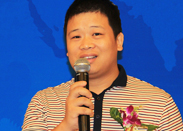 湖南娄底蜂疗人 曾伟
湖南娄底蜂疗人 曾伟
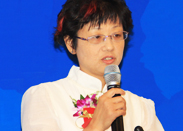 江苏如皋蜂疗人 刘红
江苏如皋蜂疗人 刘红
 江苏丹阳蜂疗人 陆九妹
江苏丹阳蜂疗人 陆九妹
 宣城市祥云养蜂专业合作社
宣城市祥云养蜂专业合作社
 宜黄远森蜂业合作社
宜黄远森蜂业合作社
 江西汪家养蜂场
江西汪家养蜂场
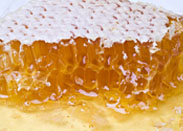 蜂胶
蜂胶
 蜂蜜
蜂蜜
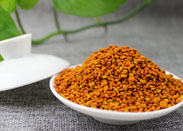 蜂花粉
蜂花粉
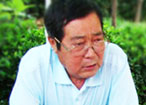 中国蜂疗抗癌第1人
中国蜂疗抗癌第1人












